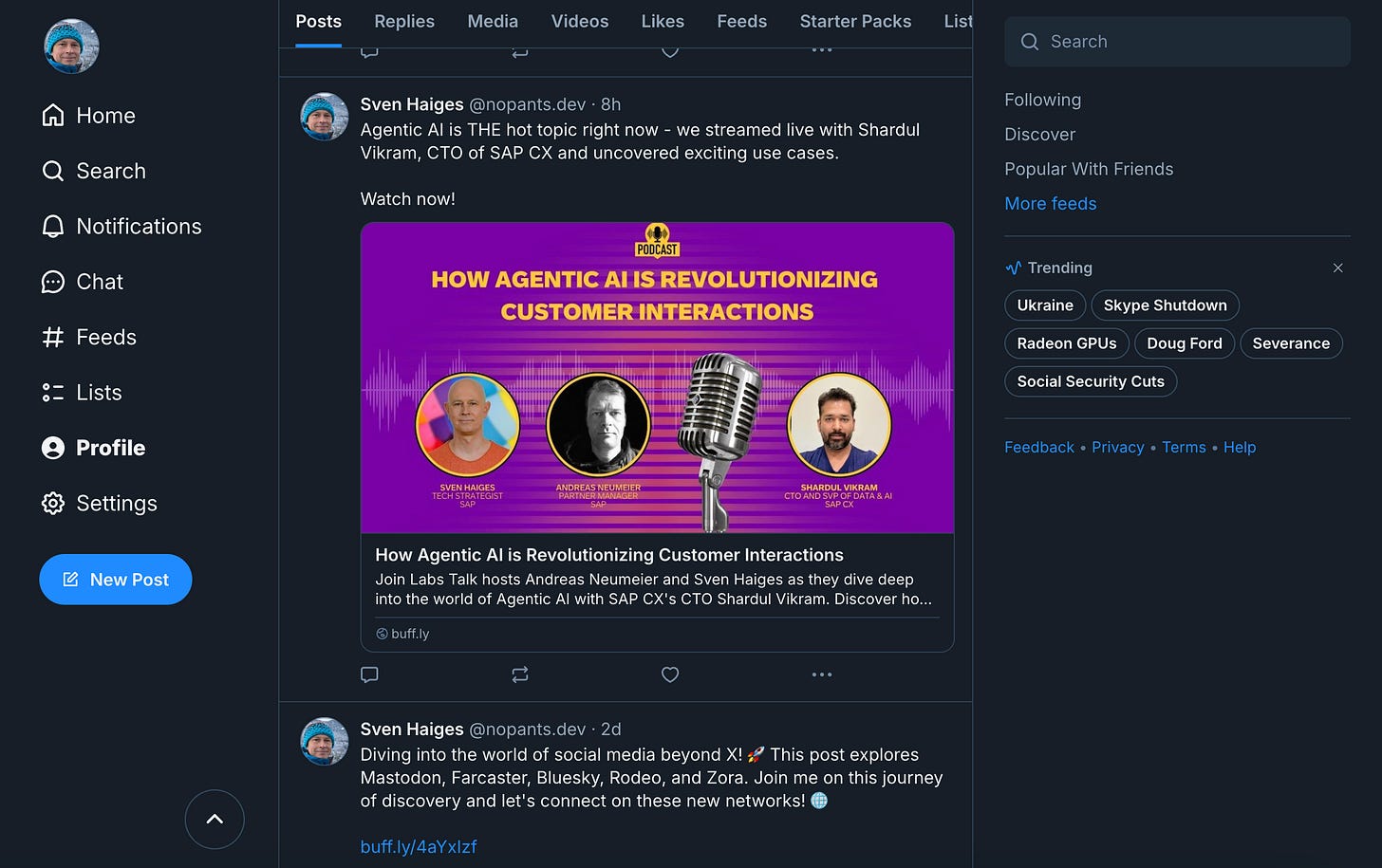Exploring Bluesky: A Potential Shift in Social Media
Navigating the New Era of Social Media Alternatives
As part of a personal exploration, and within the context of the "Beyond X" series, I've been examining emerging social media platforms. My focus recently has been on Bluesky, a microblogging service that has gained lot’s of attention as another possible alternative to X.
From Research Project to Independent Platform
Back in 2019, while Jack Dorsey was at the helm of Twitter, he initiated Bluesky as a research project. The core objective was to establish an open and decentralized standard for social media, empowering users with greater control. By October 2021, Bluesky transitioned into an independent entity, Bluesky Social, and developed the AT Protocol to underpin its functionality. Notably, in February 2024, Bluesky opened its platform to the public.
A Familiar Landscape
I found that those familiar with Twitter (X) will find Bluesky's interface and functionality quite intuitive. Users can share concise posts encompassing text, images, and videos, and engage with content through replies, reposts, quote posts, and likes. Direct messaging is also available, along with search and user following capabilities.
The AT Protocol: The Architectural Foundation
The AT Protocol is central to Bluesky’s architecture. It is composed of several key components: Personal Data Servers (PDS), which store user data; Relays, which aggregate data from various PDS hosts; and AppViews, which render data from Relays for user consumption. Furthermore, Bluesky offers domain name verification, allowing users to authenticate their identities (like mine for nopants.dev). A "marketplace of algorithms" is also present, enabling users to select or create personalized feeds, thereby enhancing user choice and customization.
Organizational Structure
Bluesky Social is structured as a benefit corporation, allowing it to prioritize public good alongside shareholder interests. It is headquartered in Seattle, Washington, and operates on a decentralized model. Funding is derived from investors, with considerations for future subscription services, rather than relying on advertising revenue (at least, for the present).
Bluesky vs. Mastodon
In comparing Bluesky with other platforms, particularly Mastodon, which also seeks to offer alternatives to X, I've observed several distinctions. Both platforms share a commitment to user control and a more congenial social media environment.
User Interface and Accessibility:
Bluesky’s user experience closely mirrors that of Twitter, facilitating ease of adoption. Mastodon, with its federated structure, presents a steeper learning curve.
Community and Network Dynamics:
Bluesky enables individual identity construction within a broader network, while Mastodon emphasizes smaller, community-centric interactions.
Content Moderation Approaches:
Content moderation on Bluesky is designed to be user-driven, with customizable algorithms. Mastodon, conversely, relies on community-specific moderation policies, leading to potential inconsistencies.
Privacy and Data Management:
Privacy and data control are central to both platforms, with Bluesky advocating for decentralized data management and Mastodon championing open-source privacy measures, though levels of protection may vary.
Key Feature Distinctions:
Key features of Bluesky include decentralization, creator control, algorithmic choice, simplicity, and privacy. Mastodon, on the other hand, highlights its federated model, community moderation, chronological timelines, and privacy focus.
Bluesky is commended for its user-friendly interface, decentralized structure (well, right now it’s more centralized…), content moderation flexibility, and emphasis on creators and privacy. However, it is still in the process of building its user base and community cohesion, and may encounter challenges in addressing misinformation.
Conclusion
Bluesky presents itself as a compelling vision for a more user-centric social media landscape. Its emphasis on decentralization, algorithmic choice, and creator empowerment marks a significant departure from the centralized models that have dominated the past decade. While challenges remain, particularly in building a robust community and addressing misinformation, its potential to reshape how we interact online is undeniable.
As this platform continues to evolve, I'm genuinely curious to hear from you:
Have you explored Bluesky?
What are your initial impressions, and do you believe it holds the key to a more equitable and engaging social media future?



